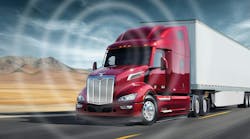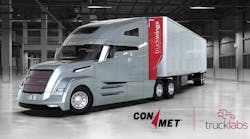Benchmarking in general can offer fleets the ability to compare where they stand among other similar operations. In addition, it can also allow fleets to determine where their operations fit among the industry average, and if they are best in the category.
“I do think the more we look at benchmarking and what it means to each individual fleet, fleets will begin to realize zones of prediction,” says Jim Buell, EVP of sales and marketing, FleetNet America. “We aren’t there yet. That’s where it should go.”
Buell says the top five VMRS systems – tires, lighting, brakes, wheels/rims/bearings and exhaust systems - account for 67 percent of roadside breakdowns. But what surprised him most was the gap between the industry average for breakdowns per system, versus the best-in-class for each system.
“What that tells me is before we get into predictive maintenance, we need to identify what are the best practices in each system and assembly, and then narrow the gap between the best-in-class fleet, and the industry average, then you can start to say ‘Okay, we probably need to be changing these parts on this timing because they’re getting close to failure.’”
TMC’s VMRS Services Manager, Jack Poster shares insights on the best-in-class compared to the median for lighting in the fourth quarter of 2018.
“The best in class fleet ran 2,516,538 miles between lighting repairs, over 34 times more in the lighting vertical average,” he says. “There are people doing an extremely good job. Our next goal is... have this fleet share some of their secrets. That’s what TMC is all about – it’s a community of ‘how do we get better, how do we save some money, how do we keep trucks on the road?”
While the program is anonymous, Buell and Poster hope to bring interested participants together to share insights on best practices that help the best-in-class fleets achieve such high mileage between breakdowns through a closed forum for participants.
“Let’s implement those best practices so we narrow the gap between the industry average and the bestin class miles between repair,” says Buell.
This allows for the next step in planning for predictive maintenance.
“Once that gets narrowed and everyone’s running 600,000 miles between a brake repair, then you can say “Okay, these items can be changed at 590,000 miles,” says Buell.
“I will consider the past half-decade a success when we get to the point where the gap between industry average and best in class narrows, and then the best in class rises a bit, Buell adds. “The whole industry gets better."



